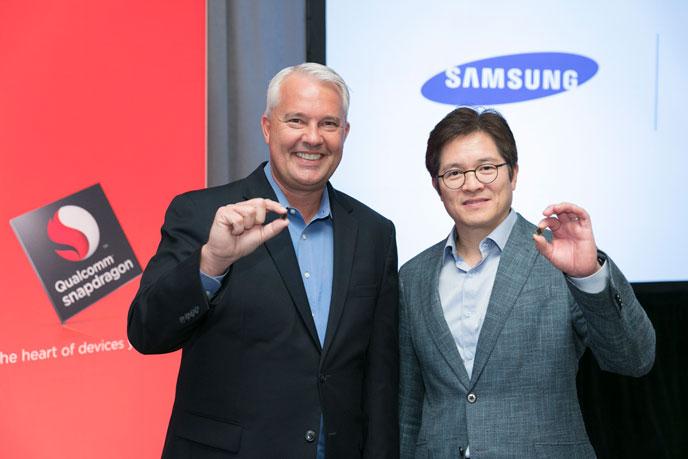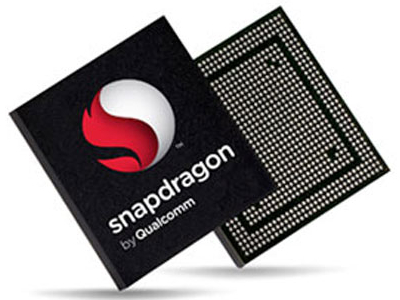Qualcomm, Samsung Hit 10nm On Snapdragon 835 SoC
Qualcomm and Samsung announced that they have collaborated to create the new Snapdragon 835 SoC on Samsung’s 10nm FinFET process.
It should be noted that Qualcomm and Samsung told us few details about the Snapdragon 835 SoC. Qualcomm said that the design is based on the Snapdragon 820 and 821 SoCs, but the company didn’t specify how many cores were used. It also didn’t reveal which version of the Adreno GPU would be used, or at what frequency the SoC would operate.
“The industry’s first mass production of 10nm FinFET technology demonstrates our leadership in advanced process technology,” said Jong Shik Yoon, Executive Vice President, Head of Foundry Business at Samsung Electronics. “We will continue our efforts to innovate scaling technologies and provide differentiated total solutions to our customers.”
The Snapdragon 835 will contain 10nm FinFET transistors when it is released, but that doesn’t necessarily mean it will be a complete 10nm design. Processors are built in segments, and it is common for a CPU or GPU to use varying processes at different stages of production. For example, a processor may use a 10nm process at one stage and 14nm process elsewhere. By using a larger process at a certain stage, a company can reduce production costs while increasing yields. It can also increase overall efficiency compared using just using the larger process.
Although we cannot say for certain if the Snapdragon 835 is built this way, it is rather early to see 10nm processors on the market, and we should acknowledge the possibility that it is only partially constructed with the 10nm process.
The 10nm transistors inside of the Snapdragon 835 are created by Samsung’s first-generation 10nm process, which is called “10LPE.” Samsung is already developing a second-generation 10nm process called “10LPP,” which is expected to launch in the second half of 2017.
Qualcomm said that the new 10nm transistor process allows the company to increase area efficiency by 30%. The company also said it will enable either a 27% increase in performance or up to a 40% decrease in power consumption over 14nm transistors.
Get Tom's Hardware's best news and in-depth reviews, straight to your inbox.
The new Snapdragon 835 is now in production and it is expected to be released sometime in the first half of 2017.
-
jasonelmore The base layer should be 10nm, and that's where the majority of the CPU and GPU cores will be. the 14nm parts will most likely be cache, modem, and we are probably still looking at a 20nm metal interconnect, because i've yet to see a foundry get below 20nm on that.Reply -
targetdrone After the exploding Note 7s and washing machines, I for one will not be rushing out to buy one of these new Samsung "thing" with these 10nm chips.Reply -
ZolaIII "The Snapdragon 835 will contain 10nm FinFET transistors when it is released, but that doesn’t necessarily mean it will be a complete 10nm design" naturally not all components will on a FinFET at all. CPU's, GPU cluster & hopefully DSP blocks would be on 10 nm FinFET all RF and probably mixed signal components (cellular broadband radio, WiFi, GPS, Bluetooth...) certainly won't (on FinFET at all). I would be more interested & presently surprised if those RF components would be built using (now mature) 28nm Samsungs FD-SOI as I am certain that would much more contribute to battery life (especially cellular radio & GPS) & there for user experience. Certainly that would be a much better than retarded MHz war in something that should be power consumption optimized. We will see but I am not a big believer when it comes to this. Up to date we have seen only a Sony GPS module built on Samsung 28nm FD-SOI and only in couple of smart watches. Results are about half power consumption compared to regular 20 nm planar proces. When you took into consideration the how much Google location service diminish battery life on your current Android phone that you certainly felt you will get a pretty good picture what I am talking about. Best regards.Reply -
TheHeisenberg I hope that this new Qualcomm Snapdragon 835 does reduce the number of phone explosions that has happened recently.Reply
With Quick Charge 4, "5 hours of use from just 5 minutes of charging.”
It is something i doubt, like how Google said at first how the Pixel could charge "7 hours in 15 minutes"
Here is a more indepth article on Qualcomm's new Snapdragon 835.
http://saintlad.com/the-new-qualcomm-snapdragon-835-quick-charge-4/
Further Reading
USB Type-C
• https://plus.google.com/+BensonLeung/posts/cEvVQLXhyRX
FinFET manufacturing of nano-sized processors
• https://people.eecs.berkeley.edu/~tking/presentations/KingLiu_2012VLSI-Tshortcourse
• http://www.samsung.com/semiconductor/foundry/process-technology/14nm/
• http://www.radio-electronics.com/info/data/semicond/fet-field-effect-transistor/finfet-technology-basics.php
• http://www.intel.com/content/dam/www/public/us/en/documents/pdf/foundry/mark-bohr-2014-idf-presentation.pdf -
targetdrone 5 hours of phone use in 5 minutes is dumping a heck of a lot of watts into the phone. Either they have to up the voltage beyond 12V or dump a HUGE about of amps which is going to lead to some serious battery stress.Reply -
anbello262 Actually, most Li-Ion batteries, if well built with enough quality and space for the inner divisions (simplified version) should be able to whitstand with no praactical issues up to 1C/h up to ~40-50% charge. This means that you can theoretically charge up to 50% on half an hour (and slower afterwards) with no issues.Reply
The problem was most likely not the quick charge itself, but the quick charge applied on mediocre batteries, not built to whitstand the current.
But this has little to do with the article. This is about a new processor, not a new quick charge battery. It's a mostly unrelated issue.

